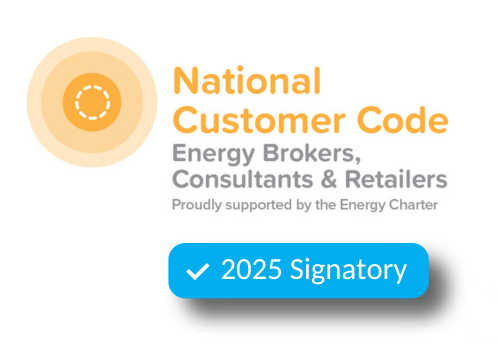
This article explains everything you need to know about small business energy vs large business energy, and how we can help businesses reduce their total energy spend by as much as 40% through reclassification.
The fundamental difference between the Small Business Energy clients (SME) and Large Business Energy (C&I) clients is that the latter can tender on the wholesale energy market to benefit from forward purchasing at advantageous rates.
Another often overlooked (and misunderstood) difference between the two categories is the way bills are structured.
Small business energy vs large business energy classifications are very different, both in how they are set up and in terms of price.
Businesses that float between certain consumption thresholds can choose to be placed in the small market and large market.
Changing the market classification for a business can help significantly reduce its energy costs.
The main indicator as to whether a business is classified as SME or C&I is whether bills are bundled or unbundled.
What is the small energy market?
The small energy market (SMe) usually refers to businesses that consume less than 100kWh of electricity.
Bills are usually bundled and although simpler, can mask hidden costs such network tariffs, energy charges, environmental charges, metering, and retail charges.
Rates are subject to change once a year, reflecting changes in the wholesale market and typically changes to network charges.
SME is simple billing, exactly the same as residential.
Although there are thresholds that are supposed to be upheld, many businesses can be classified as SMEs.
However, their consumption can be well in excess of the SME threshold, for example, a business using 300,000kWh pa could be classified as an SME.
Because the charges are bundled into the bill, the final base rates often become more expensive for small market users than C&I customers.
What is the large market?
Large Energy Market customers (C&I) are businesses that consume more than 100kWh of electricity per annum.
This also means they are able to forward purchase electricity on the wholesale futures market for periods of 12-60 months in advance.
By doing so, they can lock in prices when the market offers advantageous contracts.
However, if C&I energy users break that contract by using more or less than the agreed-upon amount of electricity or gas required, they can be hit by penalties. So, you must get the right advice about when to purchase to get rates that fit your consumption and budget.
Fortunately, this is where Leading Edge Energy can help because, as energy cost-reduction specialists, we have the expertise needed to know the right time to purchase energy.
C&I customers are issued with unbundled bills, allowing for scrutiny of Energy charges, network charges, metering charges, service charges, environmental charges, and market charges.
These are not extra charges when compared to a bundled bill, they are simple charges that are broken down and displayed separately.
How do I know what market I am in?
If your business uses more than 100MWh of electricity within a 12 month period, it can fall into the large energy market category.
However, thresholds are slightly different in each state, for example in NSW businesses that use more than 100MWh & but less than 160MWh can choose to be in the small or large market.
But, it is very common for a business to simply be classified in the wrong market. For example, a business using 200,000kWh pa should be C&I, but they are often, in reality, an SME.
On the other hand, if your business uses less than this amount, it will most likely be in the SMe category.
The easiest way to confirm this is to examine your energy bill. Using the information above, you should be able to tell whether you have been issued with a bundled (SMe) or unbundled bill (C&I).
Can I change to a different market classification and what are the benefits?
Leading Edge Energy has helped hundreds of Australian businesses to reclassify their energy use to the most advantageous category and the savings result can be astonishing.
If your business has an opportunity to change its market classification, we can help you compare the costs accurately. If savings are available to your business we’ll guide you through the process to change.
Is your business in the incorrect energy use category?
Do your business’ energy consumption patterns fit the category it has been assigned to? Are you struggling to make sense of it all?
Fill out our form, drop us an email at info@leadingedgeenergy.com.au or call us on 1300-852-770 for an obligation-free consultation and let’s talk about finding the right energy consumption category for your business.
We source, analyse, compare and rank commercial, industrial and multisite energy quotes. Obligation Free.
Chat with one of our experienced consultants today and get the insights your business needs to help manage the risks associated with volatile electricity and natural gas markets. Our energy procurement service is obligation-free and provides a time-saving way of securing lower energy rates from our panel of energy retailers.

Get advice from our Energy Management Consultants

Ewen Beard
Sales Manager
Get in Touch
Feel free to call or e-mail us. Or just fill in the form below and we’ll contact you for an obligation-free discussion.
Are you ready to save on business energy costs?
Get Started
Leading Edge Energy is proud to be a signatory of the National Customer Code for Energy Brokers, Consultants and Retailers.